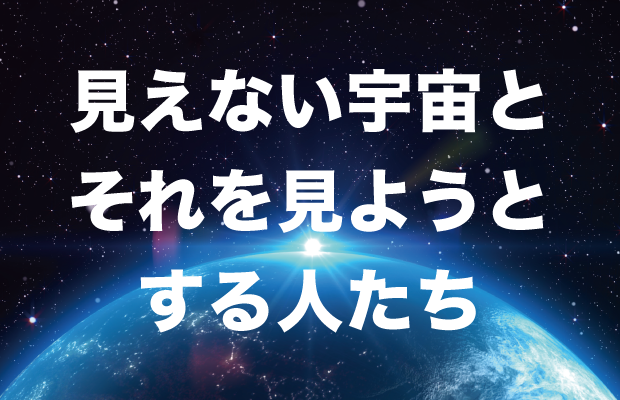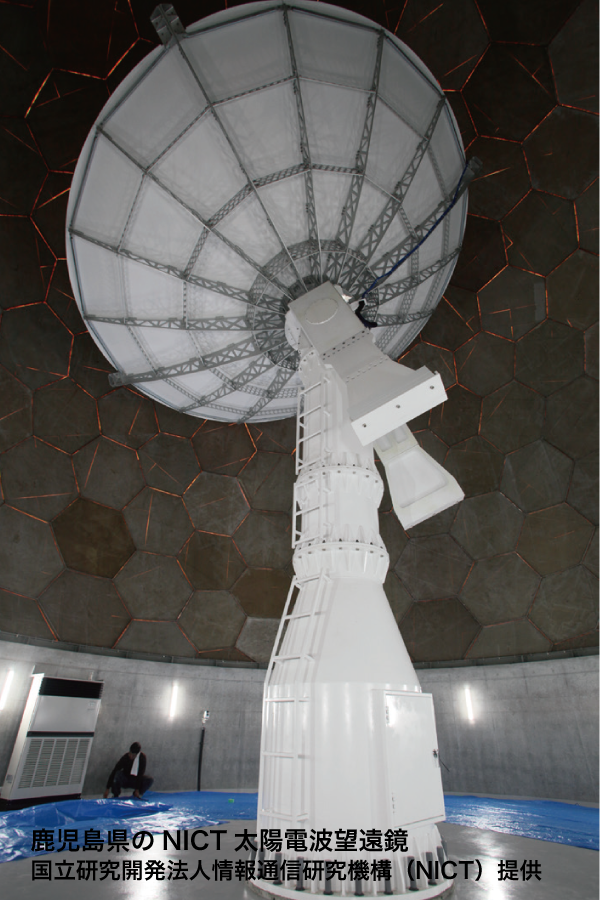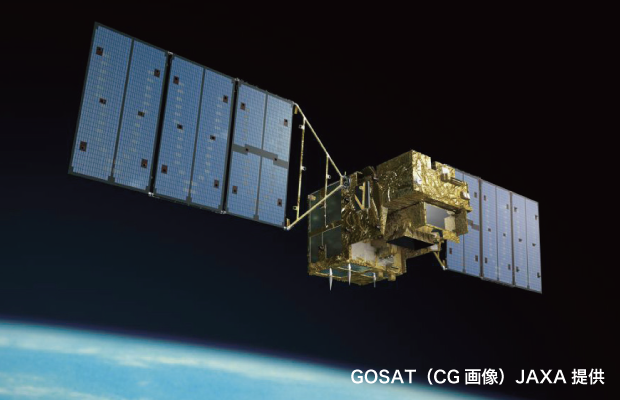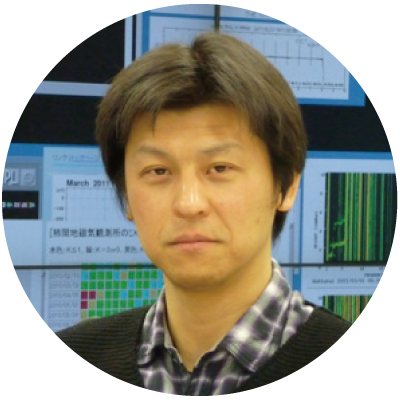- Information for Middle and High School Researchers
- Research Tips
The Invisible Universe and Those Who Try to See It
2020.01.07

In April this year, a black hole was photographed by a radio telescope for the first time in the world. Is such a "challenge to see the universe" given only to researchers?
Grote Lieber, who built the world's first parabolic radio telescope in 1937, built his own observation device in his garden and succeeded in detecting radio waves in the Milky Way Galaxy. Using things that are easily available to us, such as high-performance smartphones, we may be able to observe the invisible universe with the same ingenuity as Lieber's telescope. In this special issue, we introduce the challenge to see the universe through manufacturing under the theme of "Observational Instruments for the Universe.
Connecting our lives and the universe, "What you don't see"
Various electromagnetic waves and particles other than visible light coming from space have been used as a way to observe cosmic phenomena. As research progresses, the effects of these phenomena on our daily lives become clearer. The degree of impact of these phenomena on our daily lives depends on how accurately we predict and understand them. In this issue, we will introduce research on radio waves and infrared rays, their relationship to our daily lives, and the development of observation equipment.

Space Weather Forecasting from Solar Observations
One of the things that can be observed with the radio telescope used to photograph black holes is the sun, which is closest to us. The sun emits powerful electromagnetic waves from its activity, sometimes causing a phenomenon called a "flare. When a flare occurs, a mass of electrically charged gas ejected from the sun flies to the earth and, upon impact, causes a magnetic storm on the earth. This can result in communication problems, airplane flights, and other problems. In addition, during regular high-altitude flights and long-term stays in orbit of the International Space Station (ISS) and other spacecraft, the accumulation of exposure to high-energy particles emitted by solar flares is a significant burden on the human body. It is important to understand and predict solar activity from the viewpoint of health management of the crew and astronauts. Yuki Kubo's research team at the National Institute of Information and Communications Technology (NICT) is working on the observation of solar flares.
Solar flares generate a wide range of radio waves, from low frequency to high frequency, before and after they occur, and NICT operates a solar radio telescope in Ibusuki City, Kagoshima Prefecture, Japan. The data is recorded every 8 milliseconds to observe solar flares. The space weather forecast data produced by these observations are provided to aviation agencies through the International Civil Aviation Organization (ICAO), a civil aviation operation management organization, starting on November 7, 2019.
Furthermore, aircraft use satellite positioning (GNSS) to determine their current position, and eventually GNSS will enable automation of takeoffs and landings. However, GNSS uses radio waves, so if solar activity causes errors, it will be impossible to determine an accurate position. The provision of space weather forecasts will lead to the realization of such future technology.
Infrared light is used to study substances that cause global warming.
Through space, we can also learn about the earth itself. All gases have a property called "absorption lines," which absorb light at specific wavelengths. Using this property, we can detect greenhouse gases in the atmosphere, such as CO2GOSAT is a satellite that observes the distribution of greenhouse gases on the earth using a circle with a diameter of 10 km on the ground as a unit, GOSAT is so accurate that it can observe the concentration of greenhouse gases in a single unit, an area surrounded by a circle 10 km in diameter on the ground. This allows us to pinpoint the exact location of greenhouse gas emissions and to make a fair judgment on how to achieve the Paris Agreement.
There are about 10 institutes in the world that analyze GOSAT data, among which Japan has a dedicated supercomputer, and several research groups are competing in terms of accuracy and speed of analysis. GOSAT has been conducting observations with a resolution of about 10 km, but in the future it aims to achieve a resolution of 1 km, making it possible to identify the location of greenhouse gas emissions in individual buildings, such as power plants, for example.

Possibility of "Backyard Observatory
We introduced the observation of invisible phenomena such as cosmic radiation and global warming gases, where observations are made to "measure the strength of radio waves generated by the sun" and "see infrared radiation absorbed by greenhouse gases," and components called antennas and infrared filters detect these objects of observation. In fact, a simple radio telescope can be created by combining a satellite dish, amplifier, and diode-based detector sold at home improvement stores with a voltmeter. This makes it possible to observe some of the solar activity. "It is difficult to create space weather forecasts like NICT does by itself, but by combining many of them, it is possible to contribute to space weather forecasting by helping to identify the location of flares," says Kubo. While investigating cutting-edge research, please consider taking up the challenge of such research on your own. You may even be able to "discover astronomy in your own yard," just as Grote Lieber did.

National Institute of Information and Communications Technology (NICT)
Space Environment Laboratory, Electromagnetic Wave Laboratory
Research Manager
Yuuki Kubo three
It is Japan's only national research and development corporation specializing in the field of information and communications, including electromagnetic wave research, and is also involved in industry-academia-government collaboration and business promotion. In addition to distributing space weather forecasts, it determines, maintains, and supplies Japan Standard Time (JST).

National Institute for Environmental Studies (NIES)
Global Environment Research Center
center director
Tsuneo Matsunaga three
It is a national research and development corporation engaged in research on global environmental issues such as water quality and global warming, and environmental risk assessment, etc., and has made many global environmental monitoring databases and other information available to the public.
